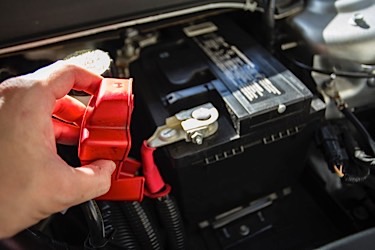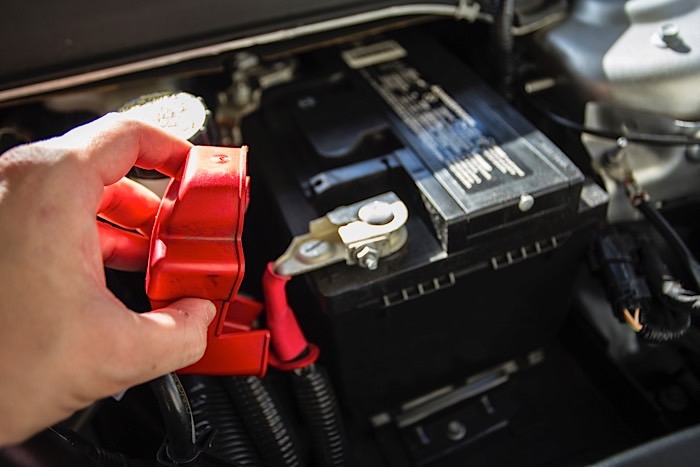 Two of the greatest changes we’ve seen in starting/charging systems during the past few model years have been the expanded use of the Absorbed Glass Mat (AGM) battery as standard equipment and the accelerating pricing structures of both AGM and conventional flooded-cell batteries. In the past, I knew many shop managers who simply replaced any battery that had been completely discharged or that had exceeded a typical warranty period of four years. They set this policy because recharging and testing the battery would, in most cases, consume more shop time and space than the remaining battery life was worth. But, testing methods have now become much more important since the retail price on many AGM and flooded-cell batteries is either approaching or exceeding $200. For this reason alone, we’re going to look at AGM battery construction and how it might be better tested in a modern production shop environment.
Two of the greatest changes we’ve seen in starting/charging systems during the past few model years have been the expanded use of the Absorbed Glass Mat (AGM) battery as standard equipment and the accelerating pricing structures of both AGM and conventional flooded-cell batteries. In the past, I knew many shop managers who simply replaced any battery that had been completely discharged or that had exceeded a typical warranty period of four years. They set this policy because recharging and testing the battery would, in most cases, consume more shop time and space than the remaining battery life was worth. But, testing methods have now become much more important since the retail price on many AGM and flooded-cell batteries is either approaching or exceeding $200. For this reason alone, we’re going to look at AGM battery construction and how it might be better tested in a modern production shop environment.
AGM ELECTRICAL PROPERTIES
Before we discuss testing procedures, let’s look at the big differences between the physical properties of AGM and conventional flooded-cell technology.
In contrast to an AGM, which contains its electrolyte in its glass mats, conventional flooded-cell technology suspends the battery plates in a cell filled with liquid electrolyte, which increases both weight and volume. While AGM and flooded-cell batteries share conventional lead/acid chemistry, the weight and volume of the AGM battery is reduced by sandwiching its fiberglass mats between the positive and negative battery cell plates. Using this technology, AGM batteries can also be configured into flat-plate or cylindrical cells.
Since AGM batteries are spill-proof, they will contain their electrolyte during a vehicle rollover and can be shipped without the expensive hazardous material issues affecting flooded-cell batteries. And, due to their glass-mat construction, AGM batteries are more vibration-resistant, which favors their use in off-road applications.
Electrically speaking, AGM batteries have less internal resistance and, because their tightly-packed cell plates and battery mats are more reactive, they can be recharged up to five times faster than flooded-cell batteries. Due to glass-mat construction, the cold-weather performance of an AGM is also less affected by sub-zero temperatures than a typical flooded cell battery.
When testing open-circuit voltage, you’re probably going to see voltages in the 12.8-volt range rather than the 12.6-volt range we see in fully charged flooded-cell batteries. AGMs also have a lower self-discharge rate, and AGM battery life is longer because an AGM can endure a deep discharge cycle of up to 80% of its capacity without affecting battery life. These combined features allow AGMs to function more efficiently in vehicles equipped with multiple high-load accessories like heated seats and windshields. The primary downsides to an AGM battery are its higher manufacturing cost and its sensitivity to over-charging.
RECHARGING AGMs
Unlike a flooded-cell battery, an AGM can be immediately damaged by overheating the electrolyte. Once the water boils from the electrolyte through a pressure-sensitive venting valve, it can’t be replaced. For this reason, the internal core temperature of an AGM battery shouldn’t exceed 120° F during the recharging process. Similarly, AGM batteries can be charged up to 14.40 volts without evaporating the water from the electrolyte. A typical “float” or maintenance charge should be about 13.8 volts.
The charging voltage of any battery is affected by the battery’s state-of-charge (SOC). If the battery is in a good state-of-health (SOH), most battery chargers will maintain a high-amperage, low-voltage “bulk” charging mode until the battery regains its charge. In contrast, the “saturation” mode is a low-amperage, high-voltage charging rate that occurs as the battery approaches a full charge. The “float” or maintenance mode incorporated into most modern battery chargers will generally hover between 13.2 volts and 13.4 volts, while the amperage rate will range between zero and approximately 1.5 volts to 2.0 volts.
Charging voltage and amperage can also be affected by the battery’s SOH. If, for example, the positive and negative plates in one battery cell are shorted together, the battery will never be able to achieve full voltage. Consequently, the battery will never enter the saturation charging mode. In contrast, battery plate sulfation caused by prolonged storage will cause a high-voltage, low-amperage charging rate due to the battery plates being coated with lead sulfate crystals precipitated from the electrolyte. To remedy sulfation, many “smart” battery chargers incorporate a “de-sulfation” mode. The de-sulfation mode will typically hover around 15.0 volts at low amperage rates, which tends to break the lead sulfate away from the negative battery plates and restore the battery’s chemical activity. Last, always remember that normal discharge/recharge cycles will eventually erode the battery plates, which will reduce their storage capacity and their overall mechanical reliability.
BATTERY CHARGING DIAGNOSTICS
If you’re recharging batteries with an “old-school,” flooded-cell battery charger, you’re likely going to ruin an AGM by over-heating the battery’s electrolyte. Any modern charger incorporates an AGM charging mode, and the most sophisticated battery chargers also contain a “diagnostic charging mode,” which is based upon the above bulk, saturation and float charging modes. This feature eliminates wasting valuable shop time by displaying a “defective battery” (or equivalent warning) if the battery doesn’t support a specific charging rate profile.
CHARGING SYSTEM ISSUES
Now that we’re in the era of computer-controlled battery charging systems, charging voltage can be influenced by operating conditions as well as accessory load, battery SOC and battery SOH. For example, the PCMs in some vehicles (like BMWs) are programmed to adjust their charging rates to compensate for normal battery plate wear. The upshot of this is that a modern charging system controlled by various inputs to the engine control module (ECM) can more efficiently maintain an AGM battery than can a conventional voltage regulator, which responds only to battery voltage and ambient temperatures. With that said, my general recommendation for replacing worn batteries would be to replace both flooded-cell or AGM with its original equipment (OE) equivalent.
On the other hand, if an AGM is being considered for an off-road or racing application, I’d recommend that the battery be located and secured away from the engine compartment and exhaust to keep core temperatures below 120° F. Since a conventional voltage-regulated charging system relies on voltage feedback from the battery to the voltage regulator, I’d also recommend that the alternator, voltage regulator and battery share clean battery positive and battery negative connections to prevent over-charging. In off-road applications, I’d recommend installing stainless steel star washers on each bolted connection and applying an aerosol anti-corrosion to all electrical and battery terminal connections. In any case, remember that a voltage drop in excess of 0.500 volts can, depending upon the amperage flowing through the circuit, increase charging voltages well beyond the 14.4-volt limit for AGMs.














